CTA “L” cars 4271-4272, built by Cincinnati Car Co. around 90 years ago, were moved from Linden to Skokie Shops on Sunday, April 14th. These are the last 4000-series cars to remain on the CTA, and were retired from active service 40 years ago. They last ran on the Evanston line, prior to its conversion from trolley pole to third rail operation.
The move was necessitated by the imminent five-month shutdown of the Dan Ryan line. The space used at Linden Yard by these cars will be needed by others in Red Line service.
The pair of 4000s has been lovingly cared for over the years by a devoted group of volunteers. Outfitted with cab signals, they have been used for charters and special events over the years, but have been seen less and less, as they have grown increasingly fragile.
There were two series of 4000s built. The first batch from 1913, called the “baldies,” had rather spartan bowling-alley type seating. The second group, from about 10 years later, had better amenities and earned the name “plushies.”
Many of these cars were purchased by railroad museums around the country, but not that many remain operable today, and several have succumbed to the tin worm and the ravages of time, weather, and neglect. Fans love them, however, since they make “all the right noises.” If you’ve ever heard the distinctive sound of train of 4000s approaching, it’s an experience you are not likely to forget.
The sound, I’ve been told, has something to do with the gearing. The only thing that comes close to the same sound occurs when I drive over a certain cobblestone street at just the right speed. It’s a sound that takes me right back to the early 1970s, when 4000s still rumbled around the Loop on the Evanston Express.
According to CERA member (and former CTA motorman) David Harrison, who was on the trip:
The move on Sunday was a transfer from Linden to Skokie. The crew was to survey rail car clearances and test rail car performance. Guests were primarily CTA employees, both current and retired, who have experience with the Antique rail cars.
The Linden-to-Skokie jaunt, which would generally involve changing ends at Howard, got extended downtown as the cars went around the Loop for “test” purposes. Fortunately, we do have some excellent pictures, thanks to the courtesy of David Harrison. To these we will add a few vintage shots showing the 4000s in bygone days, when they were the mainstays of CRT/CTA service. (If not for the 4000s, Chicago Rapid Transit wouldn’t have been able to open the State Street Subway in 1943. They were 455 out of the 456 all-steel cars CRT had.)
The future of any 90-year-old rapid transit cars must always be considered iffy and very much in doubt. You never know, but this trip may have been something of a “last hurrah” for 4271-4272 on the CTA. I understand they got up to a very respectable 44 mph top speed on this run, which they probably never would achieve in museum service.
For whatever reason, Chicago never warmed to New York’s practice of saving entire trains of “type” cars and using them in charter service. Perhaps it would have made more sense to save additional cars here. A four-car train of 4000s might have been more marketable for charters than just the pair. Then again, there is always the conundrum that increased use means wearing things out faster.
Rumor Central says it’s even possible that 4271 and 4272 may split up and go their separate ways, after decades of “marriage.” While they started life as individual double-ended cars, CTA turned them into semi-permanently married pairs in the early 1950s, around the same time that the new 6000s were being delivered as pairs. Apparently there is a 20-year-old “gentleman’s agreement” between two local railway museums that may result in their uncoupling. Perhaps they will find true love with new partners.
While the pairing of 4000s was a retrofit, they have been attached for so long that it would be somewhat of a disappointment, in a way, to see them divided with one sent (perhaps) to IRM and the other to Fox River. But either way, and whatever the future may hold for them, I say enjoy them while you still can. After all, they still make all the right noises.
-David Sadowski
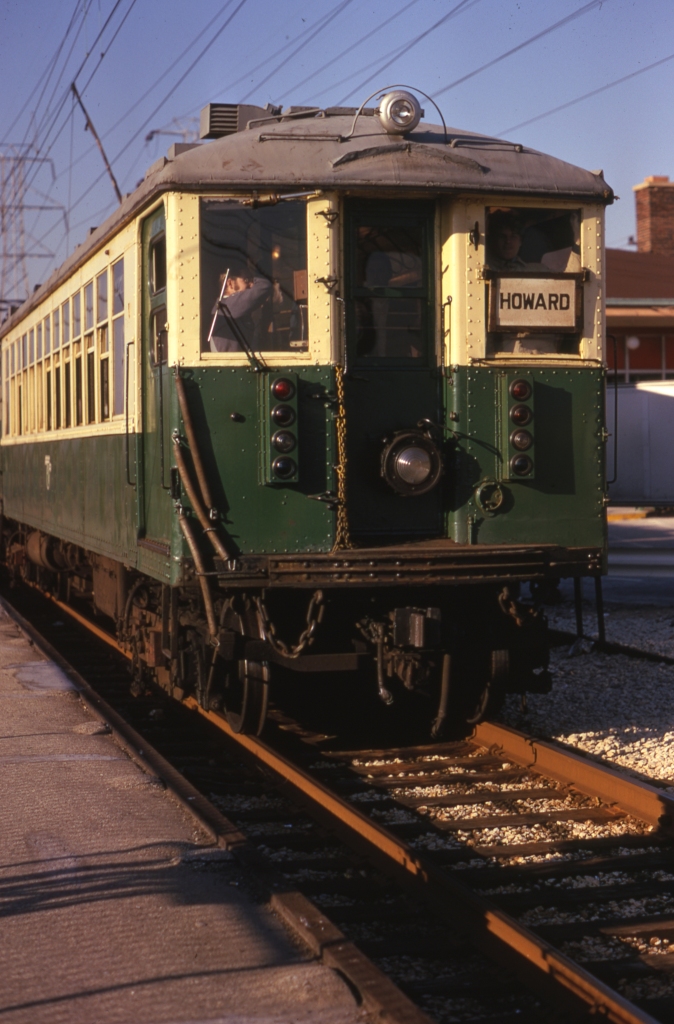
CTA 4271 at Dempster (Skokie Swift) on October 21, 1973, shortly before being repainted in brown. (Photo by Arthur H. Peterson, Author’s collection)

Special sign celebrating the 90th birthday outing of 4271-4273. (Photo by David Harrison)

4271-4272 on the Loop, April 14, 2013. (Photo by David Harrison)

4271-4272 on the Loop, April 14, 2013. (Photo by David Harrison)

4271-4272 at Sheridan, April 14, 2013. (Photo by David Harrison)
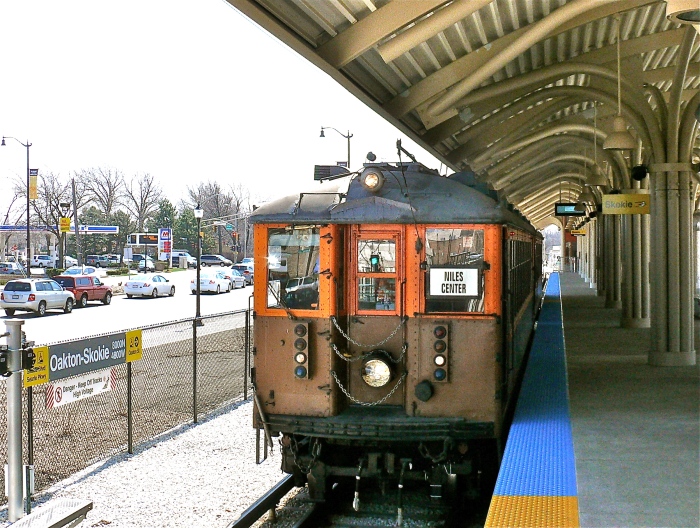
4271-4272 at Oakton, April 14, 2013, the first time these cars were at this station. (Photo by David Harrison)
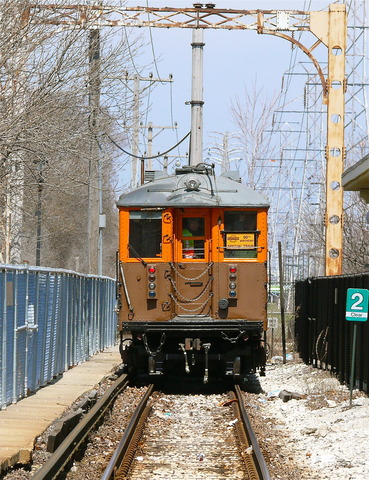
4271-4272 at Dempster/Skokie, April 14, 2013. (Photo by David Harrison)
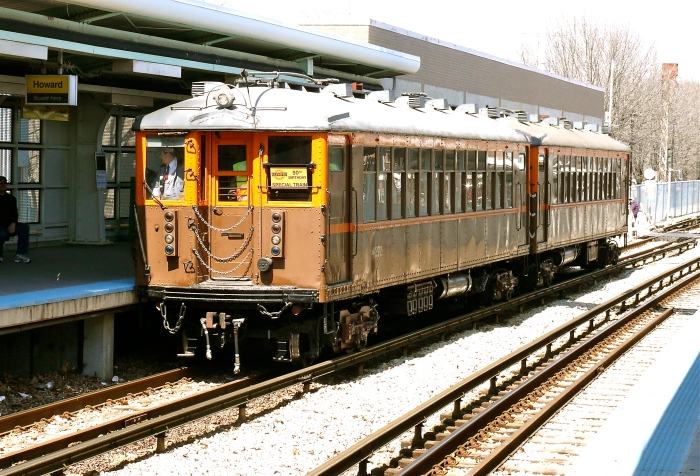
4271-4272 at Dempster/Skokie, April 14, 2013. (Photo by David Harrison)

In this May 1964 shot, the C&NW bi-levels, running left-handed, are moving away from us, while a train of 4000s approaches the Harlem terminal on Lake. The outer portion of Lake was relocated to the embankment in 1962. The 4000s on this line would soon be replaced by new 2000s. (Author’s collection)
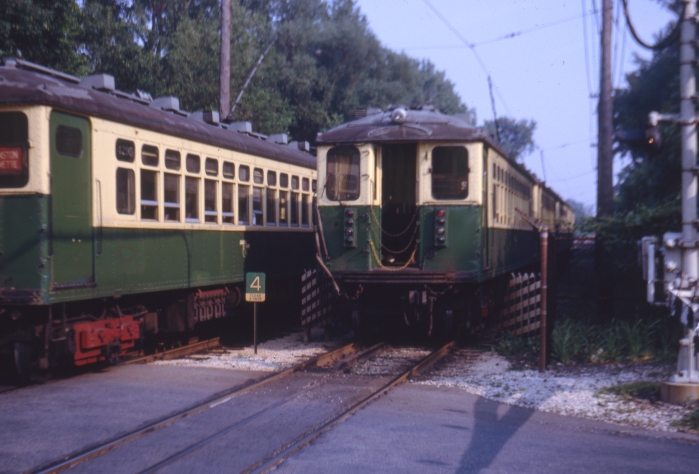
4000s in the twilight (literally) of their Evanston/Wilmette service in the early 1970s. (Author’s collection)

4000s when the Lake Street “L” ran around the Loop. (Author’s collection)
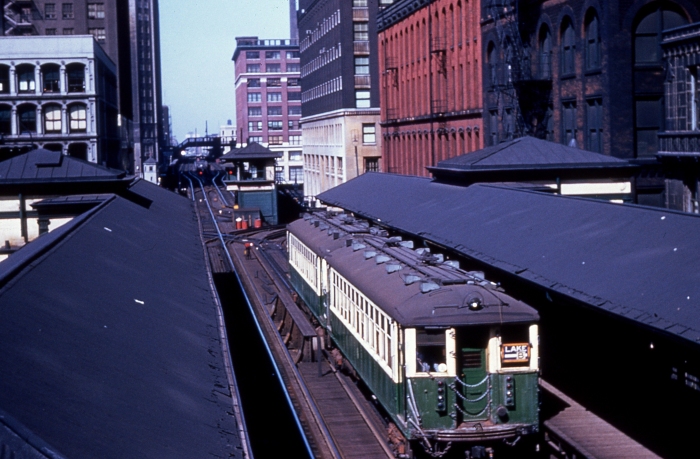
A Lake Street “B” train on the Loop “L”. (Author’s collection)

An early 1970s fantrip on the Skokie Swift. (Author’s collection)

Looking majestic, a four-car train of 4000s approaches the Dempster terminal on the Skokie Swift. (Author’s collection)

4000s in Lake Street “L” service in April, 1964. (Author’s collection)